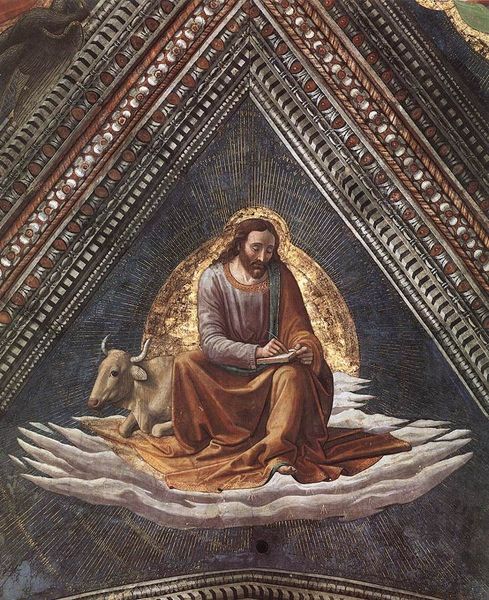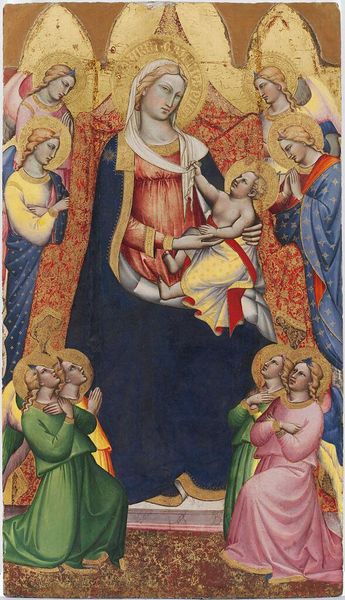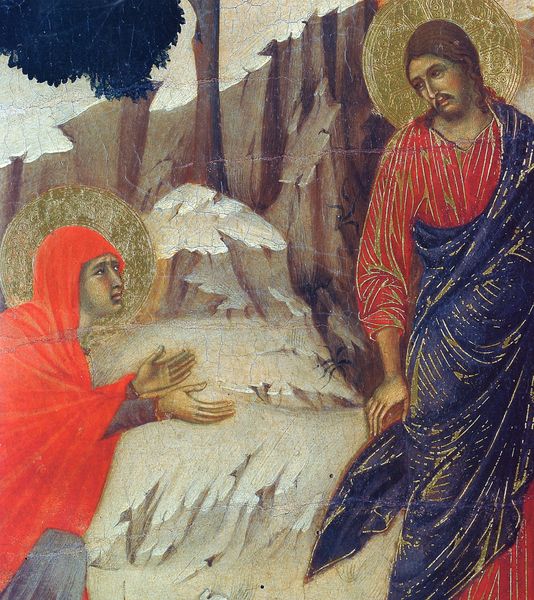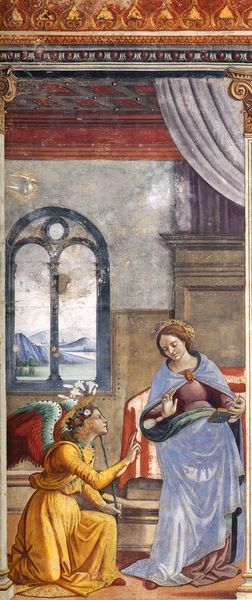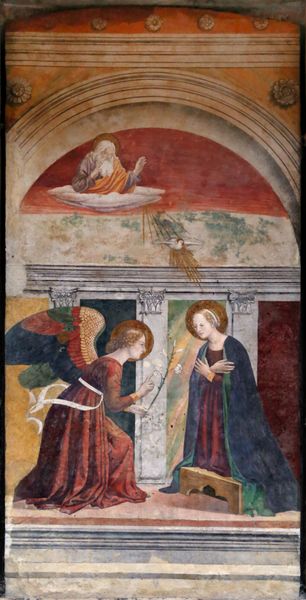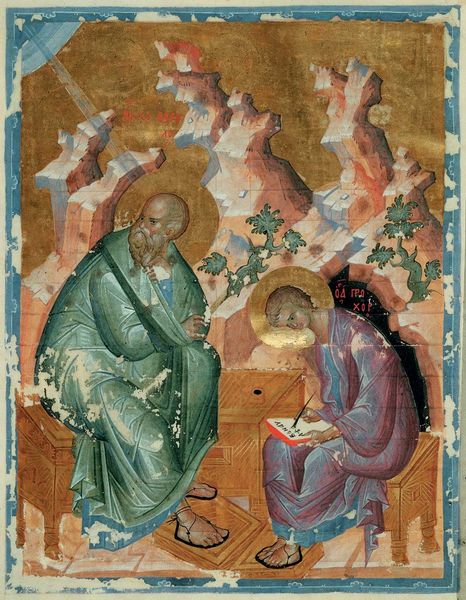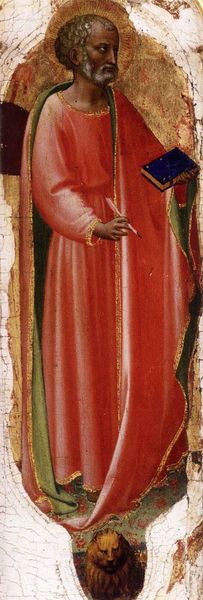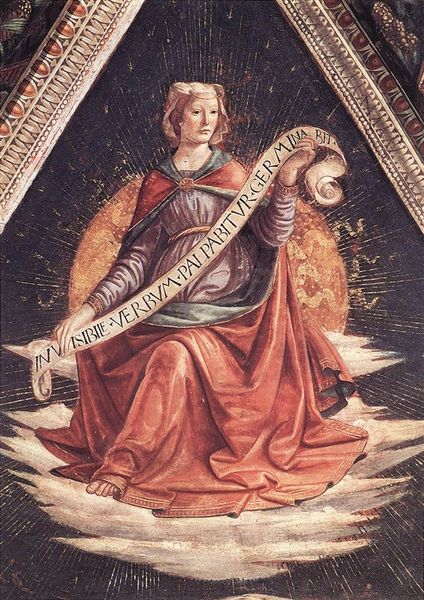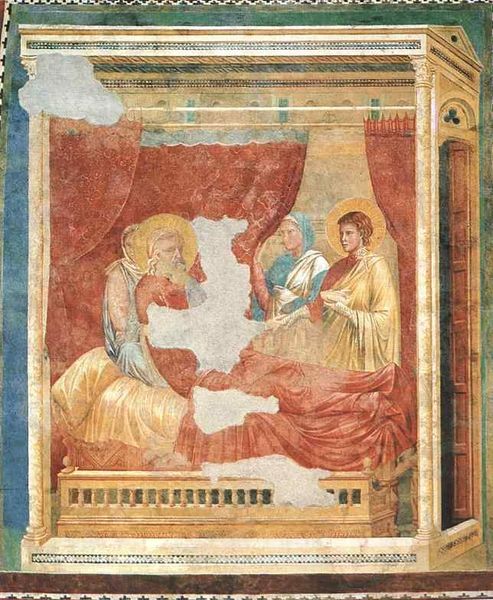
painting, oil-paint, fresco
#
portrait
#
high-renaissance
#
painting
#
oil-paint
#
figuration
#
fresco
#
oil painting
#
christianity
#
history-painting
#
italian-renaissance
Copyright: Public domain
Curator: Dominico Ghirlandaio’s fresco of St. Matthew the Evangelist, circa 1490, presents a compelling image in Santa Maria Novella. Its integration within the architecture and setting is truly masterful. Editor: Yes, my initial impression is of the inherent power—a patriarchal figure illuminated, almost floating against that somber backdrop. There is definitely something unsettling. Curator: Notice how the composition leads the eye upwards. The architectural framing mimics and reinforces the triangular space occupied by the Evangelist and his accompanying angel, all bathed in heavenly light. Editor: It’s a deliberate construction of authority. The serene, almost detached gaze of St. Matthew, paired with the angelic support, reinforces his divine purpose but from whose perspective? The red robes could even suggest ties to established religion, class structures, even imperialism. Curator: That red is certainly central. It's a dynamic focal point amidst the muted blues and whites, a carefully placed contrast that amplifies the subject’s presence and underscores the importance of the divine figure, drawing focus to his visage and, of course, the illuminated manuscript. The artist's skillful use of chiaroscuro here heightens the sense of drama. Editor: True, that interplay of light and shadow creates an engaging space, one might suggest how knowledge becomes not merely imparted but a carefully constructed tool to reinforce certain social structures, particularly where men hold significant cultural capital. This image becomes a cultural artifact, reflective of, yet working on its viewers. Curator: It’s a perfect example of the High Renaissance style - classical, poised and yet undeniably engaging in its use of naturalism and proportion. I find the structural use of diagonals compelling. Editor: Absolutely. In its context within Santa Maria Novella, one must critically consider how this fresco upholds or subverts social narratives about gender, class and the sacred. The formal elements, while masterful, are in service to such constructs. Curator: Considering both structure and setting does indeed lend to further interpretations, broadening and deepening an appreciation for High Renaissance painting! Editor: Yes, analyzing how visual and structural elements uphold broader social systems challenges me to reassess my initial understanding of visual representation itself.
Comments
No comments
Be the first to comment and join the conversation on the ultimate creative platform.
